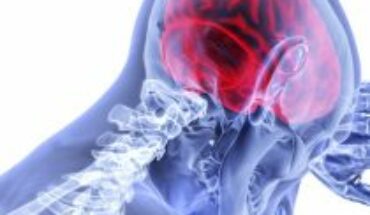Although prevalences were increasing years before the pandemic, the symptoms associated with depression and anxiety rose by 25%, according to a scientific report published by the World Health Organization (WHO).
Since Covid-19 arrived in Chile, many people (although not all) have been confined to their homes with the uncertainty of contagion, the remoteness of their loved ones and a “drastic transformation of routine”.
“When the pandemic hit, many people began to question the meaning of life and wonder why it woke up. There was a loss of daily life, the bonds coexisted behind the screens, many people faced economic problems, it was a very drastic change of routine, “said the psychologist specialized in depression, anxiety, stress and management of emotions, María Elena Duarte, who has more than 22 years of experience.
Faced with this reality, continuing with the work routines and asking the patients to get out of bed, change clothes, shower and symbolically mark the routines even from virtuality, was a dynamic that accompanied the therapies in an effort to “recover the sense” among those who attended with it behind the screen.
According to his figures, there is a before and after the pandemic: “Before, 60% of patients consulted me for anxious symptoms, that is, anxieties, panic attacks, phobias, and the rest couple, work and similar problems. After the pandemic it is 85%, there are many adults with social phobia, agoraphobia, also young people who enter the university for this symptomatology, “said Duarte.
Anxiety: fear, excessive worry and physiological changes
The collapse of students of different educational levels is a constant observed by the psychologist of Copiapó, especially those who are in the university. The move from the virtual to the face-to-face meant the “increase in doubts, especially regarding one’s own abilities,” Duarte said and adhered in turn to the persistence of perceptions of people who “feel judged and observed by their peers,” a frequent feeling of insecurity.
According to the diagnostic and statistical manual of mental disorders cited by the psychologist, DSM-5, anxiety is characterized “by a fear or fear of a real or imagined situation and excessive worry about future events, which is accompanied by an increase in heart rate, feeling of suffocation and different physiological changes.”
There may also be “insomnia, paralyzing fear, alterations in food, fear of dying and is characterized by a generalized restlessness without explanation,” he said.
In addition, there are changes in the structure of thought. Thinking styles such as “cognitive distortion” may appear, which filter reality in a way that increases anxiety. For example, the psychologist said through a phone call, there is a tendency to “think in a polarized way, think what others are thinking about me or have catastrophic thoughts,” which can trigger a panic attack.
There are people who, from the accompaniment and therapeutic training, manage to develop skills for the management of anxiety, but there are other cases that psychological tools do not manage to counteract the symptomatology, said the psychologist of the University of Santiago (USACH). In the second case, “it is necessary to complement with a psychiatrist, and in both situations, the accompaniment of people who have an affective bond with the person is fundamental.”
“In these cases, the first thing to do is psychoeducation, explain to the person what happens to them so that they can understand how the symptomatology works and then we work with tools,” Duarte explained.
During the interview, the psychologist recalled a significant case to explain the therapeutic process. It was a patient who had symptoms associated with agoraphobia (fear or anxiety that are usually associated with crowds) and could not go outside. In his case, his exercise was first to open the door of the house, then open it and be there for a couple of seconds, then put his feet outside and gradually managed to go out, first, to buy from a business.
“In this case, the family was the protagonist of that recovery because it validated what was happening to him, accompanied him in a process that had the same validity as if he had taken a medicine,” he said.
Currently, it is often spoken of “psychological first aid” to assist people with anxiety or panic attacks. When the intensity of the symptomatology rises, the specialist in this subject, gave some advice on what to do and what not to do in this situation.
In the first place, it is not useful to use “logical arguments to explain to the person what is happening,” Duarte said, containment should be carried out by reducing hyperventilation. “If the person allows him to take his hand, act as a mirror so that he breathes more slowly, sometimes listening to a song of his liking can help, sit in a space where there are not many people, help him divert attention from elements that generate anxiety, look into the eyes …”
A good accompaniment can contribute to disarticulate thoughts that stimulate and deactivate the crisis.
Depression: a state, not a decision
Another of the things that the pandemic awakened was having to look inward, look at our faces, with the family, the couple, the children, ask ourselves why, why and those responses activated depressive symptoms, reflected the psychologist.
Opening your eyes and not having desires for anything, that nothing mobilizes, loss of ability to enjoy, eating patterns, imnsomnio and fatigue for at least two weeks are part of the symptoms of a “major depressive episode,” Duarte said. But there is another form of depression.
The psychologist publishes through her professional social networks, content associated with her work. One day he uploaded an illustration that talked about dysthymia, that is, a long-term continuous depressive disorder that can last longer, even years. And the interactions multiplied.
“Many people commented and felt identified, and reading the comments I realized that there is a very generalized normalization of this symptomatology and I think it is related to social pressure.”
In material terms, a person can have everything to live without needs: house, vehicle, family love and friendships, but still have depression. “How are you going to feel bad if you have everything, they usually tell each other, generating pressure on those who live with depression, judging the emotionality of the other,” said the health professional who works from the cognitive-behavioral approach.
“The validation of the emotionality of the other is the central step to understand the person you want to help, you also have to respect that the health situation of a person is private, there is the right to privacy,” he said. “We have a tendency when a person cries to tell them not to cry, to calm down,” he added, and recommended not to do so because if a person cries, it’s because “they need to express that emotion.”
Asking also, what you can help or what the person needs is another key to a respectful accompaniment of depression, although there are also other ways.
“There is a way of being with the other that does not necessarily require knowing what the other needs but only being. I can make a loving and containing presence without necessarily talking to the other, this is achieved with the generation of a bond of validation with the other, validate their emotion and keep the communication bridge open, that makes it easier for the person with depression to know that there is that bridge to talk when he can and wants to do it. ” Duarte said.
Anxiety and Depression in School: Recognizing Humanity in Classroom Dwellers
In schools, the situation is very similar to what happens in universities: “there are many children who are with anxious symptoms.” For the psychologist with experience in the clinical and educational area, “it is necessary to investigate the cases, give them the importance and take the weight of the situation” in institutions and homes, as well as “understand that they are human beings”.
“I have had to send reports to schools to guide teachers that if such a student is with anxiety attacks prior to a test can not take it, or explain that some students may need to leave the classroom. It is important to think about how we take care of each other and welcome each other understanding that in the room we are protected by roles, but we are all human beings, “said the mental health professional.
For her, it is crucial to consider as a priority the recovery of mental health and to make the necessary methodological adaptation in this regard. Although he stressed the importance of public policies to carry out healing processes in schools since if not, “each school does what it can with what it has,” he said.
Finally, he referred to “labels” and explained that from his ethical perspective, we must think “for what” a diagnosis is assigned. “Sometimes patients cuaWhen they consult, they need to know what they have to have comprehensive elements, but it works for other people to have this label and generates little mobility, so the diagnostic process is delicate,” he said.
People are people and not diagnoses, said the postgraduate in pedagogical and social integration, from that base treatments must be carried out with health professionals and affective bonds have a fundamental place in these processes.
Follow us on





